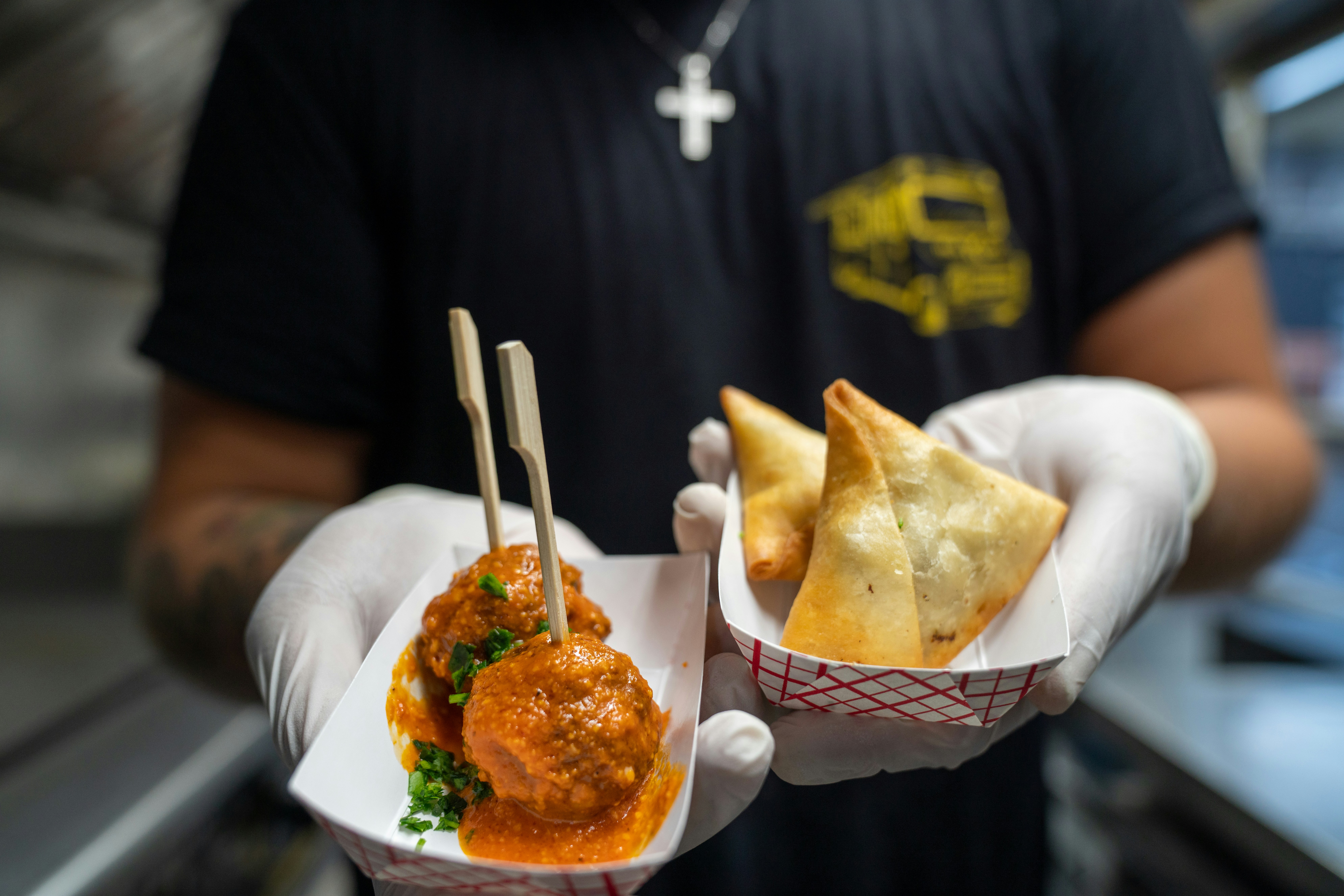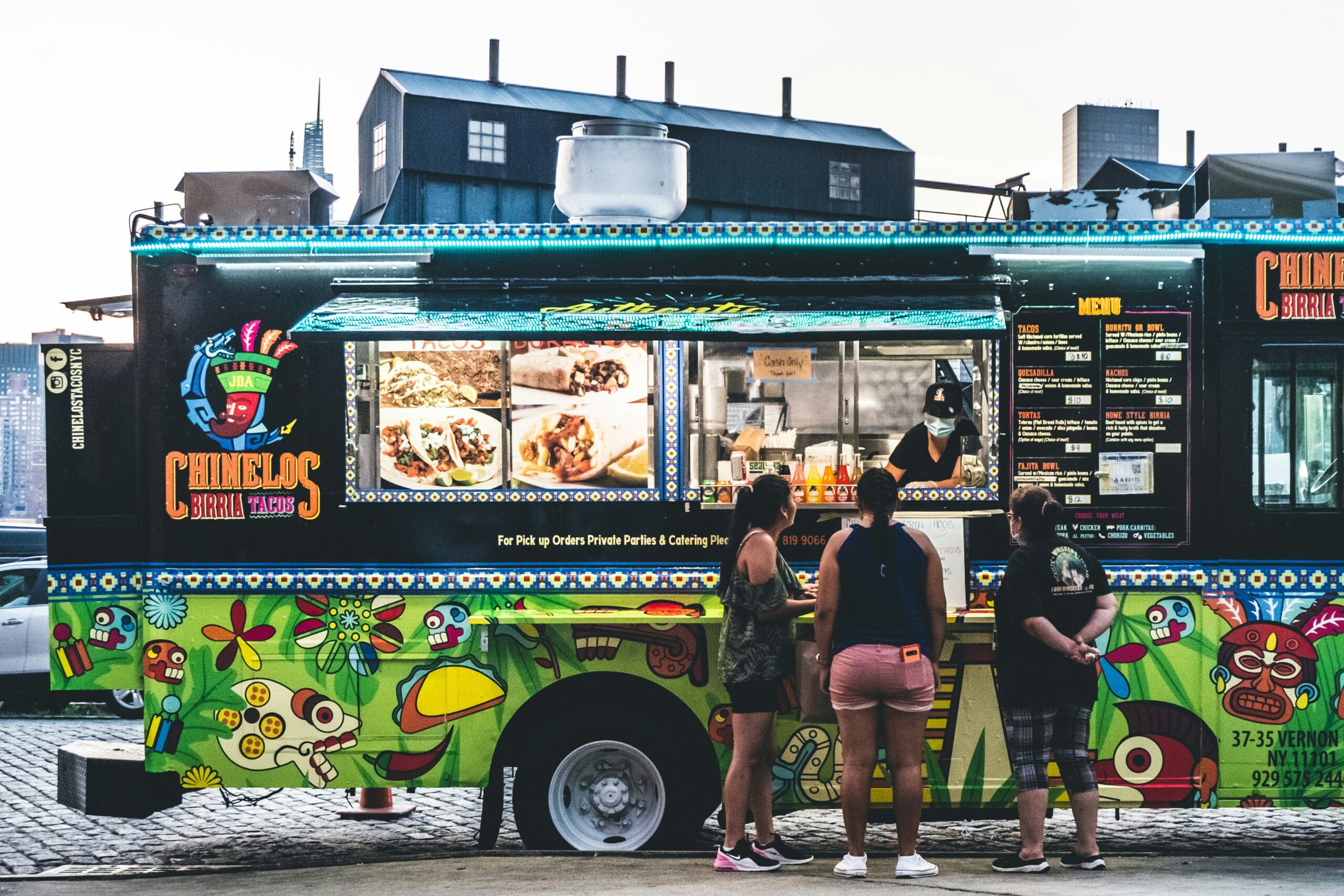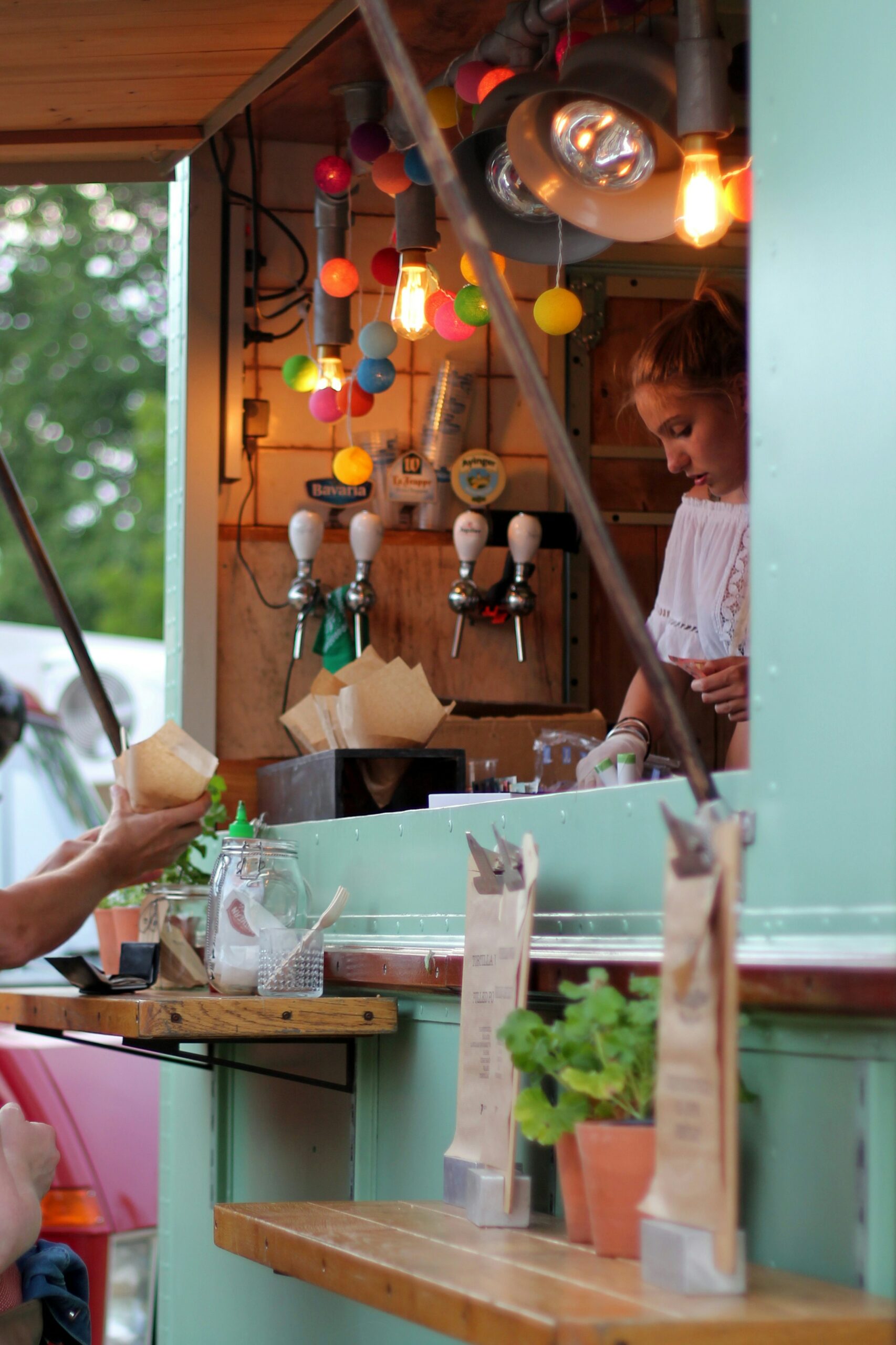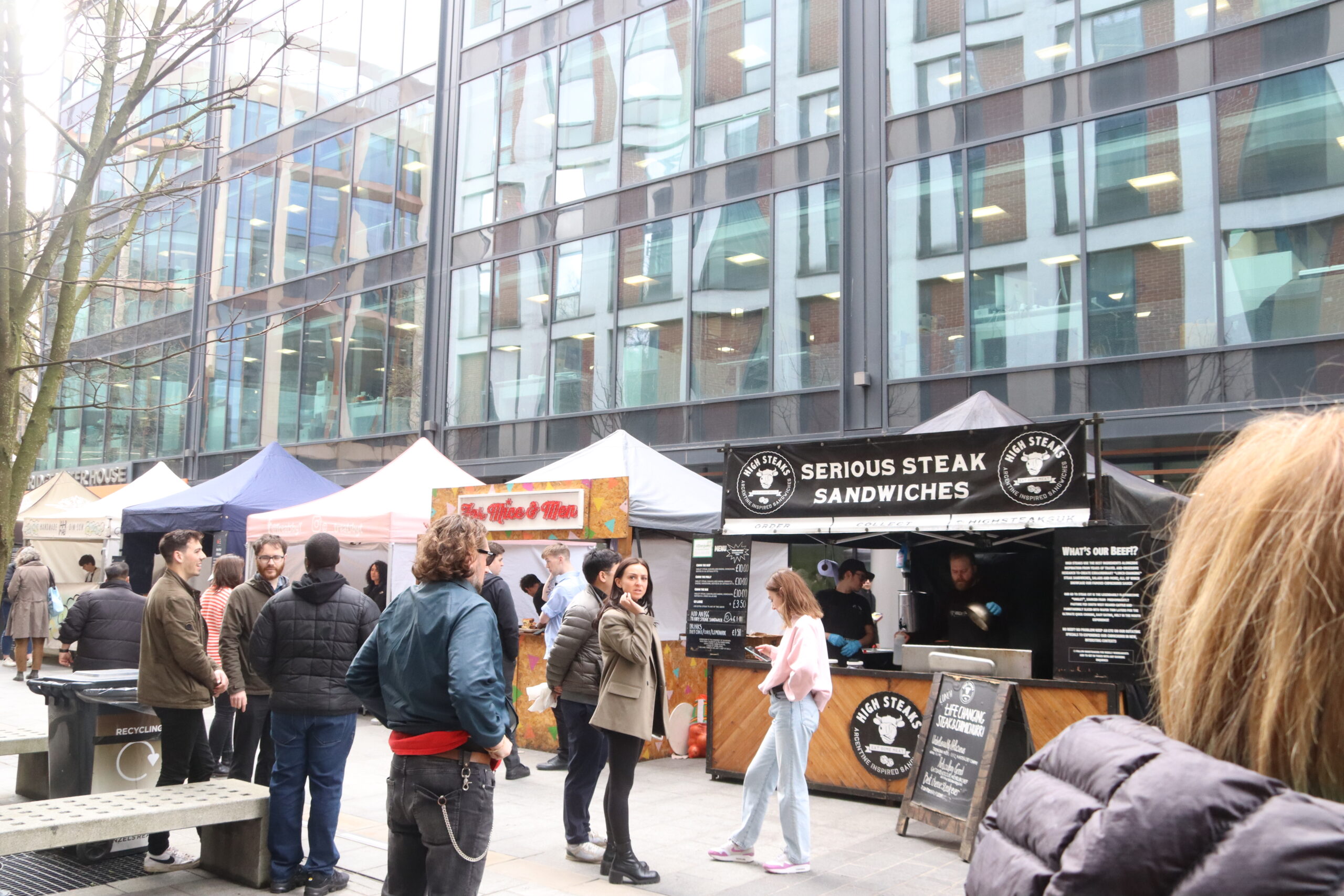The UK food truck industry is experiencing remarkable growth, with the UK food truck market experiencing a robust 6.5% growth rate. Yet with this opportunity comes fierce competition. Success hinges on two crucial elements: a strategically designed menu that drives profits and eye-catching branding that stops customers in their tracks.
Approximately 60% of food trucks become profitable within their first year, with successful food trucks often seeing year-over-year growth of 15%. The difference between thriving businesses and those that struggle? They’ve mastered the art of menu psychology and visual impact.
How Do You Choose the Perfect Niche for Your Food Truck?
Finding your niche is like finding your voice in a crowded room – it needs to be distinct, authentic, and loud enough to be heard. The beauty of the food truck business lies in its flexibility to serve specialised markets that traditional restaurants might overlook.
Identifying Your Unique Selling Point
Start by examining what genuinely excites you about food. Are you passionate about authentic regional cuisine? Do you have a family recipe that always gets rave reviews? Perhaps you’ve spotted a gap in your local market for specific dietary requirements?
Researching Your Local Market
Before settling on your niche, spend time observing your target locations. Visit farmers’ markets, festivals, and events where food trucks operate. Notice what’s missing – is there a lack of healthy options? Are vegetarian customers underserved? Your niche should fill a genuine need whilst reflecting your personal passion.

What Menu Strategies Actually Drive Food Truck Success?
Your menu isn’t just a list of dishes – it’s your most powerful sales tool. There are over 7,000 street food vans in the UK and that number has grown by 20% year on year, creating a need for differentiation in choice.
The Psychology of Profitable Menu Design
Research shows that customers spend limited time reading menus before deciding. Your layout must work within this constraint whilst maximising average order value.
Price Anchoring Strategy: Position your premium item first. If your signature burger costs £12, customers perceive the £8 option as reasonable value. This psychological principle works because customers use the first price they see as a reference point for all subsequent options.
The Golden Triangle: Customers’ eyes naturally move in a triangle pattern when scanning menus. Place your highest-margin items in the upper right corner, centre, and lower left of your menu board to maximise visibility of your most profitable offerings.
Evidence-Based Menu Categories That Work
Analysis of successful food truck operations reveals specific menu structures that consistently outperform others:
The “Rule of Seven” Menu: Limit each category to seven items maximum. Cognitive psychology research demonstrates that customers become overwhelmed with too many choices, leading to decision paralysis and lost sales.
Successful UK Menu Categories:
Street Food Classics with a Twist
- Gourmet fish and chips with unusual batters (beer, tempura, or gluten-free alternatives)
- Elevated bangers and mash with artisanal sausages and flavoured mashes
- Traditional favourites with premium ingredients or international fusion elements
- Gurt Wings, in particular, has achieved significant success by offering creative variations on classic chicken wings. Their menu features unique flavours like peanut butter, strawberry daiquiri, and Somerset cider-infused wings, blending traditional comfort food with unexpected twists.
Regional British Fusion
- Yorkshire pudding wraps filled with Sunday roast components
- Haggis spring rolls with whisky dipping sauce
- Cornish pasty variations with international fillings
- Scottish tablet ice cream or Welsh cake desserts
Global Street Food with Local Appeal
- Korean BBQ with British ingredients
- Indian street food with local twists
- Middle Eastern mezze boards
- Mexican-inspired dishes using British produce

Menu Items That Generate Strong Profit Margins
Based on food cost analysis and industry reports, certain menu categories consistently deliver higher profitability:
High-Margin Categories:
- Loaded fries and potato-based sides: Lower ingredient costs, high perceived value
- Specialty drinks: Craft sodas, fresh juices, specialty teas and coffees
- Breakfast items: Full English breakfast boxes, gourmet bacon rolls, breakfast wraps
- Vegetarian and vegan options: Often lower ingredient costs with premium pricing
The “Hero Dish” Strategy
Every successful truck benefits from one signature item that customers specifically seek out. This hero dish should:
- Be difficult to replicate exactly at home
- Use readily available, cost-effective ingredients
- Be Instagram-worthy for social media marketing
- Generate strong profit margins whilst remaining competitively priced
Seasonal Menu Optimisation
UK food trucks that adjust their menus seasonally often see higher annual revenues than those with static offerings. Research shows that foodies are now prepared to put their money where their mouth is in order to feed their growing desire for artisan foods.
Summer Menu Additions (May-September):
- Cold salads and fresh wraps
- Fruit-based desserts and smoothies
- Iced beverages and cold soups
- Lighter protein options and grilled items
Winter Menu Additions (October-April):
- Hot soups served in bread bowls
- Warming spices and comfort foods
- Hot beverages and warm desserts
- Hearty stews and braised dishes
The Art of Menu Limitation
Successful food trucks typically offer between 6-12 items. This might seem restrictive, but it’s actually liberating. With a flexible menu, food truck chefs can experiment with new recipes and innovative flavour combinations, whilst maintaining quality and speed of service.
Focus on items that:
- Can be prepared quickly during service
- Use overlapping ingredients to reduce inventory
- Travel well without losing quality
- Are easy to eat whilst standing or walking

How Do You Create Food Truck Design That Actually Converts?
Visual impact determines whether potential customers approach your truck or walk past. In busy festival environments, you have seconds to capture attention and communicate your value proposition.
Evidence-Based Colour Psychology for Food Trucks
Research from food psychology studies reveals specific colour combinations that influence purchasing decisions:
Red and Yellow Combination: These colours stimulate appetite and create urgency. However, overuse can appear cheap – use as accent colours rather than dominant themes. Many successful fast-food chains use this combination strategically.
Green for Health-Conscious Options: Trucks serving salads, smoothies, or organic food benefit from green as their primary colour, as it suggests freshness and natural ingredients.
Blue for Premium Positioning: Rarely used in food branding, making it distinctive. Seafood and dessert trucks using navy blue as their primary colour can differentiate themselves from competitors using traditional warm colours.
The Science of Readable Truck Design
Visibility research indicates specific requirements for effective food truck signage:
Font Size Requirements:
- Business name: Minimum 8 inches tall for 50-foot visibility
- Food type: Minimum 5 inches tall for clear communication
- Menu items: Minimum 3 inches tall for easy reading
Contrast Ratios:
- Light text on dark backgrounds: Better readability in bright sunlight
- Dark text on light backgrounds: More effective in low light conditions
- High contrast is essential for quick comprehension
Design Elements That Drive Customer Engagement
Window Strategy: Successful trucks often show their food preparation process. “Open kitchen” concepts where customers can see fresh food being prepared build trust and appetite appeal.
Social Proof Integration: Display customer reviews, awards, or social media handles prominently. Visible ratings and testimonials influence purchasing decisions, particularly for first-time customers.
Clear Menu Hierarchy: Organise information logically with price points clearly visible. Customers should be able to quickly identify what you serve and what it costs.

Case Study: The Power of Strategic Redesign
Real-world examples demonstrate the impact of strategic design changes. Get Plucked, a UK food truck specialising in chicken burgers, saw a dramatic boost in business after a comprehensive rebrand. By introducing bold new graphics, a consistent visual identity, and a clear, customer-friendly menu, Get Plucked quickly stood out at busy events and festivals.
The key elements of successful food truck design include:
- Consistent branding across all customer touchpoints
- Clear communication of food offerings and prices
- Professional appearance that builds trust and credibility
- Strategic use of colour and typography for maximum impact
Importance of Technology Integration within Food Trucks
Modern food trucks benefit from strategic technology integration:
QR Code Menus: Allow detailed descriptions and allergen information without cluttering your display board. Many customers appreciate accessing extended information digitally.
Social Media Integration: Display your social media handles prominently. Active social media presence helps build community and repeat customers.
Mobile Payment Systems: Essential for modern operations. Many UK consumers prefer contactless payment options, and cash-only operations may lose potential sales.
What Should You Consider Before Launching Your Food Truck Business?
Before you hit the road, several practical considerations can make or break your venture.
Insurance and Legal Considerations
Before implementing your design and menu strategy, ensure you’re properly protected. With 60% of food trucks becoming profitable within their first year (FoodParks.io, 2024), protecting your investment becomes crucial from day one.
Comprehensive food truck insurance isn’t just about compliance – it’s about protecting the business you’ve worked so hard to design and build. At CMTIA, our market traders Food and Drink Van insurance is specifically designed for mobile catering businesses operating from licensed pitches. Whether you’re running a food truck, burger van, ice cream van, or coffee van, our comprehensive liability insurance covers Public and Products Liability, with the option to add Employers’ Liability if you have staff, ensuring your business is protected against claims for injury, illness, or property damage caused by your operations.
Operational Systems
Develop efficient systems for everything from inventory management to customer ordering. Consider how you’ll handle busy periods – can your current setup serve 50 customers in an hour? What about payment processing, especially for card transactions?
Financial Planning
Factor in all costs: vehicle purchase or lease, equipment, permits, insurance, commissary kitchen rental, fuel, and marketing. Many new operators underestimate ongoing costs like maintenance and permit renewals.
Your Next Steps to Food Truck Success
The UK food truck industry offers tremendous opportunity, but success requires strategic thinking about every customer touchpoint. Your menu design and visual branding aren’t separate elements, they’re integrated tools that work together to create profitable customer experiences.
Generally speaking, a food truck can expect profit margin of around 43% when operated efficiently, but achieving this requires careful attention to menu psychology, cost control, and customer experience design.
Start with one signature dish that you can execute flawlessly, design around that hero product, and scale systematically. The most successful food truck operators focus on mastering these fundamentals before expanding their operations.
Remember: in the food truck business, you’re not just serving food, you’re creating mobile experiences that customers will seek out, recommend to friends, and return to repeatedly. Make every element count.
Ready to protect your food truck investment? Ensure your mobile kitchen is comprehensively covered with CMTIA market trader food and drink van insurance that understands the unique needs of mobile food businesses. Get protected before you hit the road.



